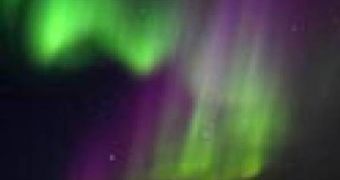Assessing weather patterns in Antarctica is crucial for the development of science, especially given the fact that the Southern Continent is one of two areas where global warming is becoming increasingly present. For this reason, an international scientific consortium has managed to set up a number of “space weather” observatories on the ice sheets. By combining these data with some obtained by NASA's THEMIS satellite array, experts are finally able to get year-round readings in the region, especially from the large magnetospheric substorms, which are the triggers of Aurora Australis events.
“The Antarctic is magnetically connected to vast regions of space and the solar wind, and provides a unique window to observe dynamic processes in Earth's upper atmosphere and beyond,” Siena College expert Allan Weatherwax explained. He is one of the co-principal investigators for the international Polar Experiment Network for Geospace Upper-atmosphere Investigations (PENGUIn), together with University of New Hampshire Institute for the Study of Earth, Oceans and Space expert Marc Lessard.
The PENGUIn project is one of the largest scientific collaborations in the world, including researchers from the Augsburg College, the University of California-Berkeley, the Dartmouth College, the University of Maryland, the New Jersey Institute of Technology, the Stanford University, the Virginia Polytechnic Institute and State University, the University of Michigan, as well as the Tohoku University, from Japan.
A number of observatories have been placed at various locations in the Antarctic. Devices range in size and complexity, and the international consortium handles both very sophisticated data-collecting stations – featuring advanced instruments powered by the wind and the Sun – and smaller sensor units, which are able to record and store data until the information is retrieved, at designated time intervals. “In order to fully understand the phenomena we're studying, you have to know what happens with the field lines at both the poles,” Lessard said.
Auroras occur because the Earth's magnetosphere extends far out into space, where it gets bombarded by solar winds and super-charged particles coming from the Sun. That energy is directed alongside magnetic field lines, which is why the Auroras sometimes look like curtains that hang over the horizon, on which straight, parallel lines can be identified. By assessing the complexity and the strength of the Aurora phenomena, as well as the variations in the Earth's magnetic field, the research group can gain valuable data on how space weather looks like, as well as on the factors that influence it the most.

 14 DAY TRIAL //
14 DAY TRIAL //